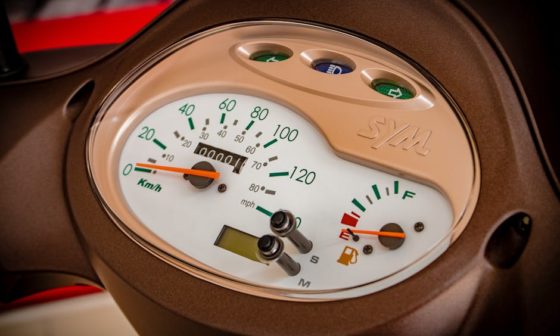
Tired of lagging indicators delaying your trade execution? The double exponential moving average (DEMA) offers a powerful solution for market analysts seeking sharper, faster signals. Developed by Patrick Mulloy, the DEMA indicator quickly became essential for serious traders because of its superior responsiveness. But what is DEMA in trading, exactly? Simply put, the DEMA meaning involves a sophisticated calculation that applies double smoothing to price data, dramatically reducing the inherent time lag common in traditional moving averages. This reduction in lag allows you to unlock entry points and exit strategies with unprecedented speed and accuracy. Why settle for slow signals when precision is possible? In this comprehensive guide, discover how this proven technical tool transforms price action analysis and learn the step-by-step method for using the double exponential moving average (DEMA) to optimize your trading performance.
Understanding Moving Averages
To fully comprehend the significance of DEMA, it’s essential to have a solid understanding of moving averages. Moving averages are vital tools in technical analysis that help traders filter out noise and identify trends in price movements.
There are various types of moving averages, but they all serve the common purpose of providing a clearer picture of the market’s overall trend.
The primary purpose of using moving averages is to reduce noise in price data, making it easier to spot trends. By focusing on the smoothed line instead of daily price fluctuations, traders can identify whether a market is in an uptrend, downtrend, or trading sideways.
The Basics of Exponential Moving Averages (EMA)
Exponential Moving Averages (EMA) are a type of moving average that places more weight on recent data points. The concept of EMA is the foundation upon which DEMA is built.
EMA already provides a higher level of responsiveness compared to simple moving averages, making it a valuable tool for traders looking for timely signals.
It is a mathematical calculation used to smooth out historical price data, emphasizing the significance of the most recent prices in the dataset.
What Makes DEMA Unique?

What sets DEMA apart from other moving averages is its double-smoothing process. While EMA applies a single level of smoothing, DEMA goes a step further by smoothing the data twice.
This double smoothing makes DEMA incredibly sensitive to recent price changes and significantly reduces the lag, a common issue with traditional moving averages.
This responsiveness is particularly valuable in fast-moving markets, where delayed information can result in missed opportunities.
Traders often rely on DEMA to identify both the primary trend and minor price fluctuations, helping them make more precise trading decisions.
DEMA Formula
The formula combines EMA calculations in a specific way, ultimately resulting in the DEMA line. A detailed explanation of this formula is crucial for those considering using DEMA in their trading strategies.
The formula for EMA is:
EMA = K* (current price – previous EMA) + previous EMA
The formula for DEMA is:
DEMA = 2 * EMA – EMA of EMA.
Calculating DEMA
The calculation of DEMA involves several steps.
1. Calculate the initial EMA: To start, you need to calculate the initial EMA for a given period. This can be any time period you choose, such as 10 days or 20 days. The EMA is calculated by taking the average of the closing prices over the selected period.
2. Calculate the initial EMA of the EMA: Once you have the initial EMA, you can calculate the EMA of the EMA – EMA (EMA) using the same period. This is done by taking the average of the EMA values calculated in step 1.
3. Calculate the DEMA: The DEMA is then calculated by taking twice the value of the initial EMA minus the EMA of the EMA. Mathematically, it can be expressed as DEMA = 2 * EMA – EMA (EMA).
4. Repeat the process for subsequent periods: For each subsequent period, you repeat steps 1 to 3 using the most recent closing prices. This allows you to update the DEMA value as new data becomes available.
It’s important to note that the DEMA is a lagging indicator, meaning it may not always accurately represent current market conditions. However, it can be useful in smoothing out price data and identifying potential trend changes.
DEMA in Trading Strategies
DEMA can be effectively integrated into various trading strategies. Its responsiveness to market changes makes it suitable for both trend-following strategies and mean reversion approaches.
Understanding how to use DEMA in different trading scenarios is vital for traders looking to leverage its potential.
1. DEMA Crossover Strategy

The DEMA crossover strategy involves using two DEMA lines of different periods. Traders often use a short-term DEMA (e.g., 9-period) and a long-term DEMA (e.g., 21-period). When the short-term DEMA crosses above the long-term DEMA, it generates a buy signal, indicating a potential uptrend.
Conversely, when the short-term DEMA crosses below the long-term DEMA, it triggers a sell signal, suggesting a potential downtrend.
2. DEMA Divergence Strategy
DEMA divergence is a strategy that focuses on divergences between the DEMA line and the price chart. When the DEMA line shows a different trend from the price (e.g., the price is making lower lows, but DEMA is making higher lows), it signals a potential trend reversal. Traders use this divergence to anticipate price changes and make timely trading decisions.
3. DEMA Support and Resistance Strategy

In this strategy, traders use DEMA lines as dynamic support and resistance levels. When the price approaches a DEMA line, it often reacts in some way. Traders monitor these reactions to make trading decisions.
For instance, if the price bounces off the DEMA line, it can be considered a support level, and traders may look for buying opportunities. If the price breaks below the DEMA line, it may act as resistance, and traders may consider short positions.
4. DEMA Breakout Strategy
DEMA breakout strategies involve waiting for the price to break through a DEMA line. For instance, if the price breaks above the DEMA, it signals a potential uptrend, and traders may enter long positions.
Conversely, if the price breaks below the DEMA, it suggests a possible downtrend, and traders may consider short positions.
5. DEMA and Price Action Strategy
Traders who incorporate price action analysis into their strategies often use DEMA to confirm price patterns. For example, if a bullish reversal pattern forms on the price chart and is confirmed by a DEMA crossover, it strengthens the case for a long trade.
6. DEMA and Fibonacci Retracement Strategy

DEMA can be used in conjunction with Fibonacci retracement levels. Traders look for DEMA reactions at key Fibonacci levels (e.g., 50%, or 61.8%) to identify potential entry and exit points. This strategy combines both trend-following and retracement trading techniques.
Advantages of Using DEMA
The advantages of using DEMA in your trading are numerous. Its double smoothing process allows for more accurate and timely identification of trend reversals, giving traders an edge in decision-making. By understanding these advantages, traders can make the most of this powerful tool.
One of the most significant advantages of DEMA is its reduced lag compared to other moving averages.
DEMA’s double smoothing process makes it highly responsive to price changes. It excels at capturing short-term price movements while still focusing on the broader market trend.
Financial markets are often characterized by significant price fluctuations and market noise. DEMA’s double smoothing reduces noise in price data, filtering out minor price fluctuations.
Potential Drawbacks of DEMA

While DEMA is a valuable indicator, it’s not without its drawbacks. Understanding these limitations is essential for traders to use DEMA effectively. Some potential drawbacks include sensitivity to market noise and the risk of overtrading. Traders need to be aware of these factors to mitigate potential risks.
DEMA’s enhanced responsiveness can also be a potential drawback. It’s more sensitive to short-term price fluctuations, which means it may react to market noise. In highly volatile markets or during news events, DEMA can produce more signals, some of which may not be reliable.
The increased responsiveness of DEMA can lead to false signals, especially when there are minor price movements or temporary reversals within a trend.
DEMA’s ability to capture short-term price movements can sometimes lead traders to chase trends. This means traders may enter positions too late after a significant portion of the price move has already occurred.
DEMA vs. Other Moving Averages
Comparing DEMA to other types of moving averages helps traders understand when and why they might choose DEMA over alternatives. This section explores the strengths and weaknesses of DEMA in comparison to simple moving averages, exponential moving averages, and other moving averages.
The choice between DEMA, SMA, and EMA depends on your trading goals and market conditions:
- DEMA: Ideal for traders who prioritize responsiveness, reduced lag, and noise reduction. It is well-suited for capturing short-term trends and minimizing false signals.
- SMA: Useful for long-term trend identification and filtering out minor price fluctuations. It’s suitable for investors and traders with a longer time horizon.
- EMA: Strikes a balance between responsiveness and noise reduction. It’s favored by traders looking for timely signals without extreme sensitivity to short-term price movements.
In summary, DEMA outshines other moving averages like SMA and EMA in terms of responsiveness, reduced lag, and noise reduction. Traders who prefer timely and accurate signals, especially in fast-moving markets, may find DEMA to be a valuable addition to their technical analysis toolkit.
However, the choice of moving average ultimately depends on your trading style, objectives, and the specific market conditions you are trading in.
Common Mistakes to Avoid
No trading strategy is without pitfalls. This section highlights common mistakes that traders should avoid when using DEMA, such as relying solely on DEMA signals without considering other factors or overtrading based on its responsiveness.
Ignoring Fundamental Analysis
Mistake: Neglecting fundamental analysis and relying solely on technical indicators.
Using Incorrect Timeframes
Mistake: Selecting inappropriate timeframes for DEMA, leading to signals that don’t align with your trading style.
Overlooking Risk Management
Mistake: Neglecting proper risk management techniques when executing trades based on DEMA signals.
Trading Without a Plan
Mistake: Trading impulsively without a clear trading plan.
Conclusion
In the dynamic world of trading and technical analysis, the Double Exponential Moving Average (DEMA) stands as a valuable tool with unique characteristics.
Its ability to reduce lag, enhance responsiveness, and filter out market noise can provide traders with a competitive edge in making timely and informed trading decisions.
However, it’s essential to remember that DEMA, like any technical indicator, is not a standalone solution for success in the markets. It should be a part of a broader trading strategy that considers fundamental analysis, proper risk management, and a disciplined approach.
By understanding the advantages and limitations of DEMA, traders can harness its power to capture short-term trends and reduce false signals.
Additionally, combining DEMA with other technical indicators and continuous learning can lead to more robust trading strategies.
Frequently Asked Questions (FAQs)
What is the main difference between DEMA and other moving averages?
The primary difference is that DEMA uses double smoothing, making it more sensitive to recent price data compared to traditional moving averages.
How can I calculate DEMA on my trading platform?
Most modern trading platforms offer DEMA as a built-in indicator. You can simply select it from the indicator list, and the platform will calculate it for you.
Are there any specific timeframes where DEMA is more effective?
DEMA can be effective on various timeframes, but it’s often used on shorter timeframes for more timely signals in fast-moving markets.
Can DEMA be used in combination with other technical indicators?
Yes, DEMA can be combined with other indicators to enhance the robustness of your trading strategy.
Where can I find reliable resources to learn more about DEMA?
You can explore online trading forums, educational websites, and books on technical analysis to learn more about DEMA and its applications in trading.








